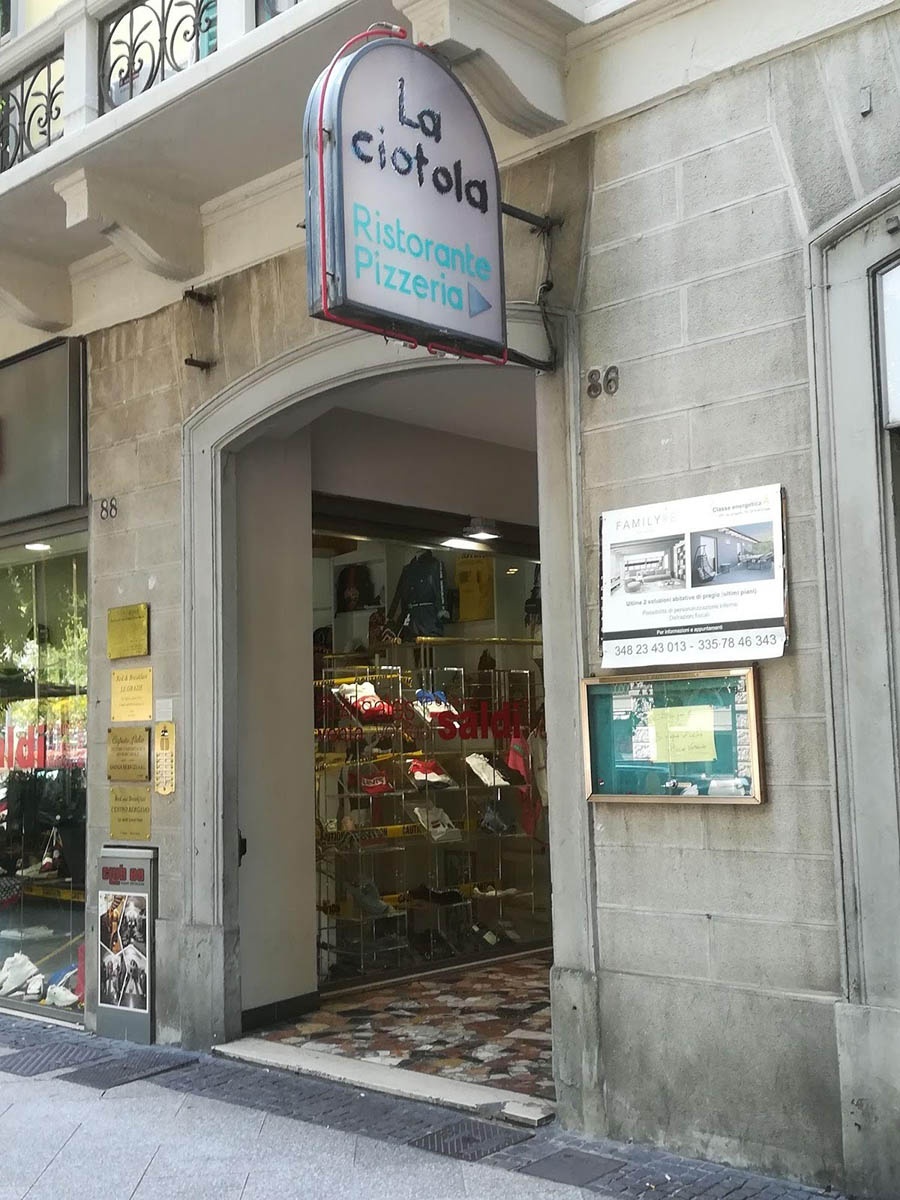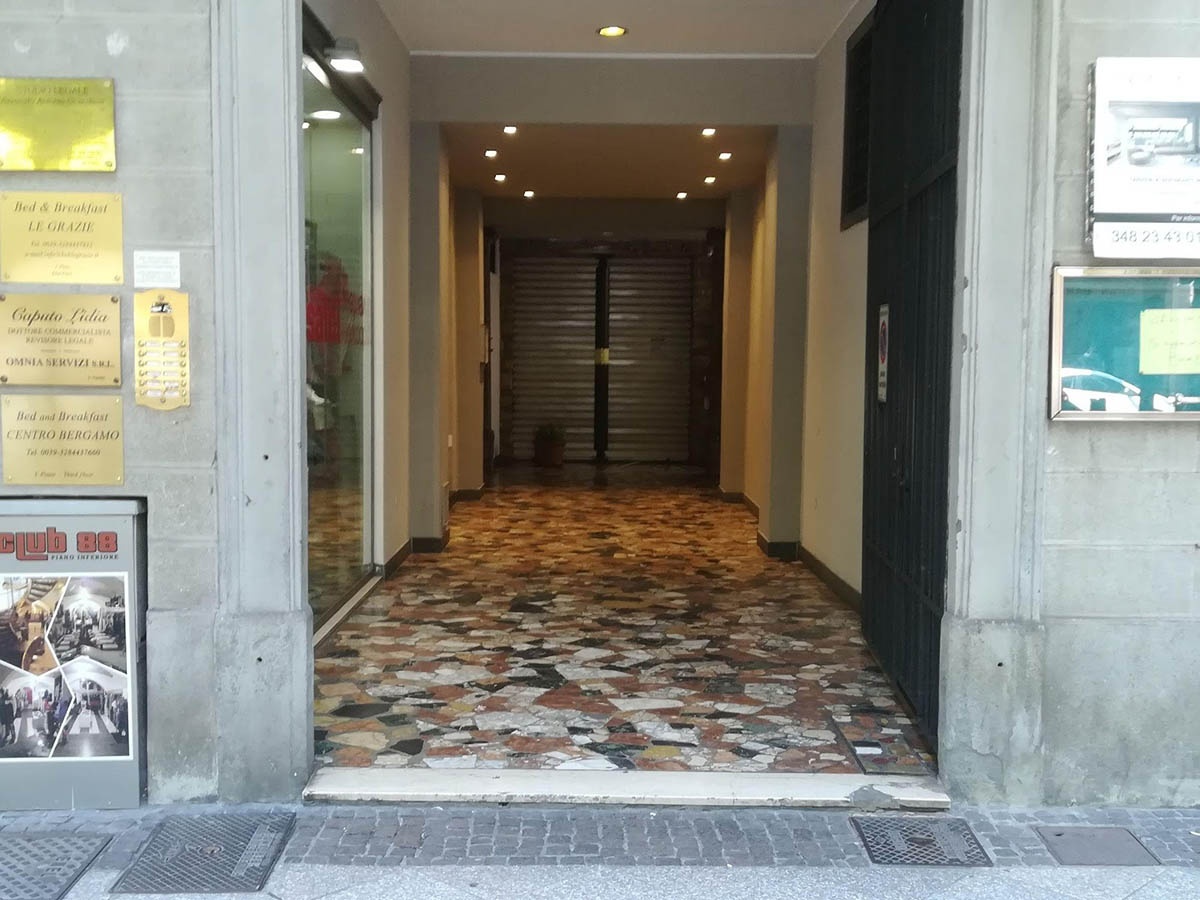The Testa family has been involved in the restaurant industry since 1953.
Together with the Urban District of Commerce we met Luigi and Teresa, who created the La Ciotola restaurant in the mid-1950s.
In reality, the first restaurant was Osteria America, created by Luigi and Teresa after taking over an old tavern from the 1800s. Located a short distance from the current restaurant, it was a place that, from its name, brought to mind distant places and the phenomenon of emigration, that is still very much felt. The patrons were mostly Bergamasco people returning from Switzerland, France and Belgium. They met there to meet old friends, update themselves on the lives of acquaintances, drinking wine and eating traditional dishes.
There were also those who, on their way to Milan for work, filled their lunchbox with reassuring homely food.
Because we know that food is an identity and that familiar flavours are what make you feel at home, even more so than places.
In addition to food, there were good neighbourhood relations at the restaurant. "We all helped each other" says Mrs. Teresa with a hint of nostalgia.
"It even happened that the most loyal customers took care of our children while we worked." It was a time of mutual respect and trust. Even at the market, which was just around the corner, business was done "by word".
"Then in the summer, we put the tables outside. We worked a lot but we also had a lot of fun. We played cards, danced and sang!"
I was also a “home” for those who immigrated from the south, especially teachers, who looked for opportunities to meet people and a place to feel a little less distant from their loved ones.
Mrs. Teresa is an elegant, kind woman. Next to her, two of her children, Antonella and Ferdinando, who don’t speak much like those who are used to working hard rather than chatting.
"Our cuisine is the result of a great team effort that begins with the choice of products, mostly local ones, and of the suppliers with whom we have relationships that have lasted for years."
The rest is done by passion and dedication to work. "At the restaurant there are still people who started with us and our knees tremble to think that someone will retire soon and we will have to replace them."
They then add that those getting into the hospitality industry today have a sweetened image of their work - thanks to television and the programs about famous chefs - and many times the new people struggle to keep up with the pressing rhythms of the kitchen. "Today our most onerous commitment is to transfer the passion to those who want to work in this world."
Mrs. Teresa often uses the term "sacrifice" intended as the awareness of having given a lot of herself to this company. Antonella also tells us, between a smile and a sigh, how she, who grew up always helping out between tables and ladles, returned "by mistake" to the restaurant and then chose not to leave anymore.
Yet the name of the new restaurant is due to her. After returning from a long period of study in the United States, she decided to import the concept of the “bowl” (ciotola in Italian), full of good and healthy food, anticipating the trend by a few years, which is in vogue today.
Because even in the kitchen you can never give up innovation and a look towards the future. While taking tradition into account is important, you must know how to grasp the changing world and the innovations of taste and well-being.
To innovate also means to seek new gastronomic paths and it is here that Ferdinando brings us a plate of sweet casoncelli: an all-orobic dessert made at La Ciotola.
Speaking of tradition, the restaurant obviously cannot be lacking in local dishes such as homemade casoncelli, polenta taragna with mushrooms and some rare goodies such as tripe and cooked shoulder from Schilpario.
In the restaurant, as if it were a house, there are children’s drawings on the walls, the many newspaper articles dedicated to this long-lived story and photos, many photos, even filling the drawers of the sideboards.
Among all those that have been kept, Mrs. Teresa proudly shows us two: a group of Japanese people who stayed in Bergamo for several days and who, finding no language in common, each evening after dinner drew on paper what they wanted to eat the next day; and that of her, elegant and proud, in Campidoglio, next to the then Mayor Rutelli to collect the Rita Levi Montalcini award given to only one hundred Restaurateurs throughout Italy.
This place, at times so Bergamasco, seems to us much more like a welcoming crossroads of different stories, nations and languages. Where good food is a universal language that welcomes anyone who needs to find at least a little what is missing from home. Wherever it is.
The Testa family has been involved in the restaurant industry since 1953.
Together with the Urban District of Commerce we met Luigi and Teresa, who created the La Ciotola restaurant in the mid-1950s.
In reality, the first restaurant was Osteria America, created by Luigi and Teresa after taking over an old tavern from the 1800s. Located a short distance from the current restaurant, it was a place that, from its name, brought to mind distant places and the phenomenon of emigration, that is still very much felt. The patrons were mostly Bergamasco people returning from Switzerland, France and Belgium. They met there to meet old friends, update themselves on the lives of acquaintances, drinking wine and eating traditional dishes.
There were also those who, on their way to Milan for work, filled their lunchbox with reassuring homely food.
Because we know that food is an identity and that familiar flavours are what make you feel at home, even more so than places.
In addition to food, there were good neighbourhood relations at the restaurant. "We all helped each other" says Mrs. Teresa with a hint of nostalgia.
"It even happened that the most loyal customers took care of our children while we worked." It was a time of mutual respect and trust. Even at the market, which was just around the corner, business was done "by word".
"Then in the summer, we put the tables outside. We worked a lot but we also had a lot of fun. We played cards, danced and sang!"
I was also a “home” for those who immigrated from the south, especially teachers, who looked for opportunities to meet people and a place to feel a little less distant from their loved ones.
Mrs. Teresa is an elegant, kind woman. Next to her, two of her children, Antonella and Ferdinando, who don’t speak much like those who are used to working hard rather than chatting.
"Our cuisine is the result of a great team effort that begins with the choice of products, mostly local ones, and of the suppliers with whom we have relationships that have lasted for years."
The rest is done by passion and dedication to work. "At the restaurant there are still people who started with us and our knees tremble to think that someone will retire soon and we will have to replace them."
They then add that those getting into the hospitality industry today have a sweetened image of their work - thanks to television and the programs about famous chefs - and many times the new people struggle to keep up with the pressing rhythms of the kitchen. "Today our most onerous commitment is to transfer the passion to those who want to work in this world."
Mrs. Teresa often uses the term "sacrifice" intended as the awareness of having given a lot of herself to this company. Antonella also tells us, between a smile and a sigh, how she, who grew up always helping out between tables and ladles, returned "by mistake" to the restaurant and then chose not to leave anymore.
Yet the name of the new restaurant is due to her. After returning from a long period of study in the United States, she decided to import the concept of the “bowl” (ciotola in Italian), full of good and healthy food, anticipating the trend by a few years, which is in vogue today.
Because even in the kitchen you can never give up innovation and a look towards the future. While taking tradition into account is important, you must know how to grasp the changing world and the innovations of taste and well-being.
To innovate also means to seek new gastronomic paths and it is here that Ferdinando brings us a plate of sweet casoncelli: an all-orobic dessert made at La Ciotola.
Speaking of tradition, the restaurant obviously cannot be lacking in local dishes such as homemade casoncelli, polenta taragna with mushrooms and some rare goodies such as tripe and cooked shoulder from Schilpario.
In the restaurant, as if it were a house, there are children’s drawings on the walls, the many newspaper articles dedicated to this long-lived story and photos, many photos, even filling the drawers of the sideboards.
Among all those that have been kept, Mrs. Teresa proudly shows us two: a group of Japanese people who stayed in Bergamo for several days and who, finding no language in common, each evening after dinner drew on paper what they wanted to eat the next day; and that of her, elegant and proud, in Campidoglio, next to the then Mayor Rutelli to collect the Rita Levi Montalcini award given to only one hundred Restaurateurs throughout Italy.
This place, at times so Bergamasco, seems to us much more like a welcoming crossroads of different stories, nations and languages. Where good food is a universal language that welcomes anyone who needs to find at least a little what is missing from home. Wherever it is.
Accessibility values
 Bathroom with grab bars
Bathroom with grab bars
Accessibility
Wheelchair accessible restaurant; entrance with a 2cm threshold, with a hinged door opening inwards, 83cm wide, reachable by a covered path (short internal walkway) which is in turn connected to a public footpath with stone paving.
Between the walkway and the footpath there is a 5cm height difference, upon request the restaurant staff will position a mobile wooden ramp.
The bathroom is accessible, it is on the ground floor and has a hinged door. It has adequate manoeuvring space for a diagonal approach to the toilet bowl, has a tilting handle to the right and a fixed handle to the left of the toilet.
The toilet is 45cm high.
The washbasin is 80cm high, adjustable in height, with a frontal approach.
The restaurant and the cuisine
The restaurant is on the ground floor and offers traditional cuisine from Bergamo and pizza, vegetarian dishes or specific dietary requirements upon request.
Soglia di ingresso: 2 cm
Larghezza porta ingresso: 83 cm
Altezza WC: 45 cm
Altezza del lavabo del locale bagno: 80 cm regolabile in altezza.
Gallery
Ingresso ristorante

Ingresso dal marciapiede alla galleria coperta

Polenta taragna, casoncelli, salumi senza glutine. A richiesta piatti per celiaci.